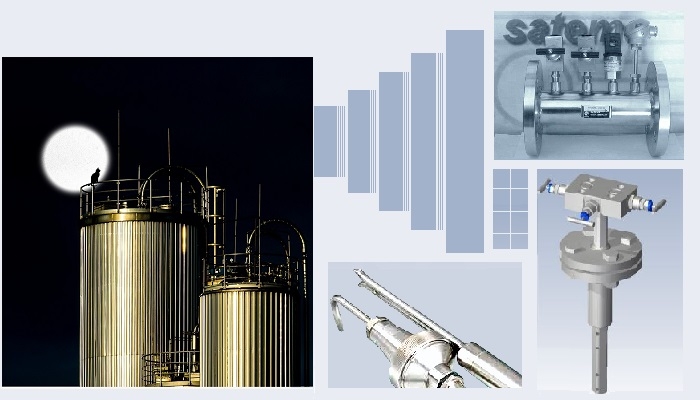Quadratic primary flow elements evaluation

Generally talking about Newtonian fluids, inviscid and incompressible, are useful measured by this robust and traceable family of instruments based on J.B. Bernoulli equations.
Their main advantages are: no moving parts in to the fluid media; wide choice of construction materials on function of pressures-temperatures ratings; to design low head loss versus good signal slope at the taps.
Until a few years ago, the problem was to detect lowest signals under the kg/m2 or mmH20 unit, with older instrumentations resolution put mainly uncertainty undetermined. Smart electronic instruments, programmable and accurate have extended reliability and repeatability.
Gases, Liquids, Liquid-Vapor-phase mixtures, Wet vapors, Saturated vapors, superheated water are usefully measured with:
• S Pitot - Darcy tubes by partial insertion
• Averaging Pitot Tubes - Pitobar by full insertion
• Venturi reverse - Prior in line mounting
S Pitot - Darcy tubes
Suitable for dirty media or polluted fluids, it is the standard gauge to measuring stacks, exhaust gases, combustion gases.
Flow range up to 30 m/s at +800 °C temperature and over.
Advantages: direct measuring on point velocity, depending on radial insertion, depth adjusting easily adjustable in depth, along pipe diameter, normal to stream direction.
Disadvantages: need to determine the flow coefficient at laboratory against certified sampling gauge or equivalent Pitot Prandtl tube Nist-AHR traceable or mass flow meter by air tunnel rig. Typical Cs value within 0.81 to 0.86.
Averaging Pitot - Pitobar
This primary flow elements group, due to excellent dynamic characteristics of accuracy and stability is better choice than S Pitot - Darcy tubes. Full immersion along diametral line in meter section Pitobar can detect by itself the dynamic pressure averaged like than more pulse array port points on impact side probe, instead of more equivalent Pitot tubes in parallel installation.
Large section pipes available, conduct area, static differential pressure, temperature gradient and construction materials enhance application limits up to 120 m/s of velocity with +800 °C in temperature and further, up 200 bar pressure.
Reynolds numbers within 12,000 to 1 million (> 100,000 on full scale typical rate of +/- 0.1% in repeatability) with flow coefficient setting at laboratory, Cd from 0.6 to 0.66.
Advantages: significant improvement versus S Pitot - Darcy tube performances, with extension of application limits such as velocity, pressures and temperatures.
Disadvantages: more expansive than referring S Pitot - Darcy tube; less flexibility installation as for generic ready installations. Custom project designed on application requirements.
Venturi reverse - Prior
The measuring tube of this primary flow element achieves an original variation of Venturi device. By
using the outer surface of a frusto-conical diverging section that progressively shrinks
the transit section against the circular external pipe. This arrangement halves the overall meter size respect to the classic in line profile of converging - diverging tube.
Here the restriction is represented by the minimum
annular section at the base of the cone. Downstream of the restriction the pressure suddenly drop down while flow regains velocity, supplying sweet small stable vortices, not affected from vibration noise trail, arising by the fluids threads separations, different working principle from vortices flowmeters.
Prior meter measures the differential static pressure upstream minus downstream at the throat taps. Differential pressure versus head loss ratio is at least double than of subsonic Venturi MPSO 15 ° or 7 ° on referring to equal throttling coefficient (beta).
Signal level is so enhanced and more readable, while the total pressure loss, as accidental pressure drops, are almost comparable between Venturi MPSO and Prior meters.
Advantages: better efficiency in performances with the most kinds of fluids
Disadvantages: need for calculations, depending on the application. Installation on dedicated pipe or determined conduct.
Posted in: Technologies and instruments evaluation
